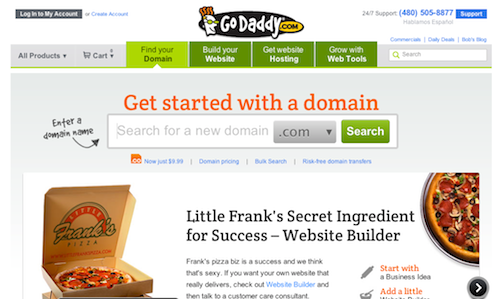I wanted to provide an update to an article I wrote yesterday about Go Daddy’s Website Builder sample website for the fictitious business, Little Frank’s Pizza.
A reader emailed me at 4:30am to let me know Go Daddy was advertising its Website Builder program on its home page and showed a graphic that included a domain name. When the reader visited that domain name (LittleFranksPizza.com), instead of a seeing a slick website, there was a standard GoDaddy ppc landing page. When I visited that url several hours later, I saw the same thing and wrote an article about it.
Later on in the day, LittleFranksPizza.com was resolving to a fun website instead of the standard Go Daddy landing page. Not only is it a nice looking website, it also contained good information about how the Website Builder program could be used by a SMB to build a functional website.
Nobody asked me to follow up with this article, but I gave them a little bit of a ribbing because the domain name wasn’t operational, and I wanted to follow up on it. Perhaps my article made them realize the site wasn’t working, or perhaps it was a brief glitch that caused the website to not appear. Whatever the case is, put simply, the website was created by Go Daddy exactly how it should have been developed to help promote its Website Builder program.



